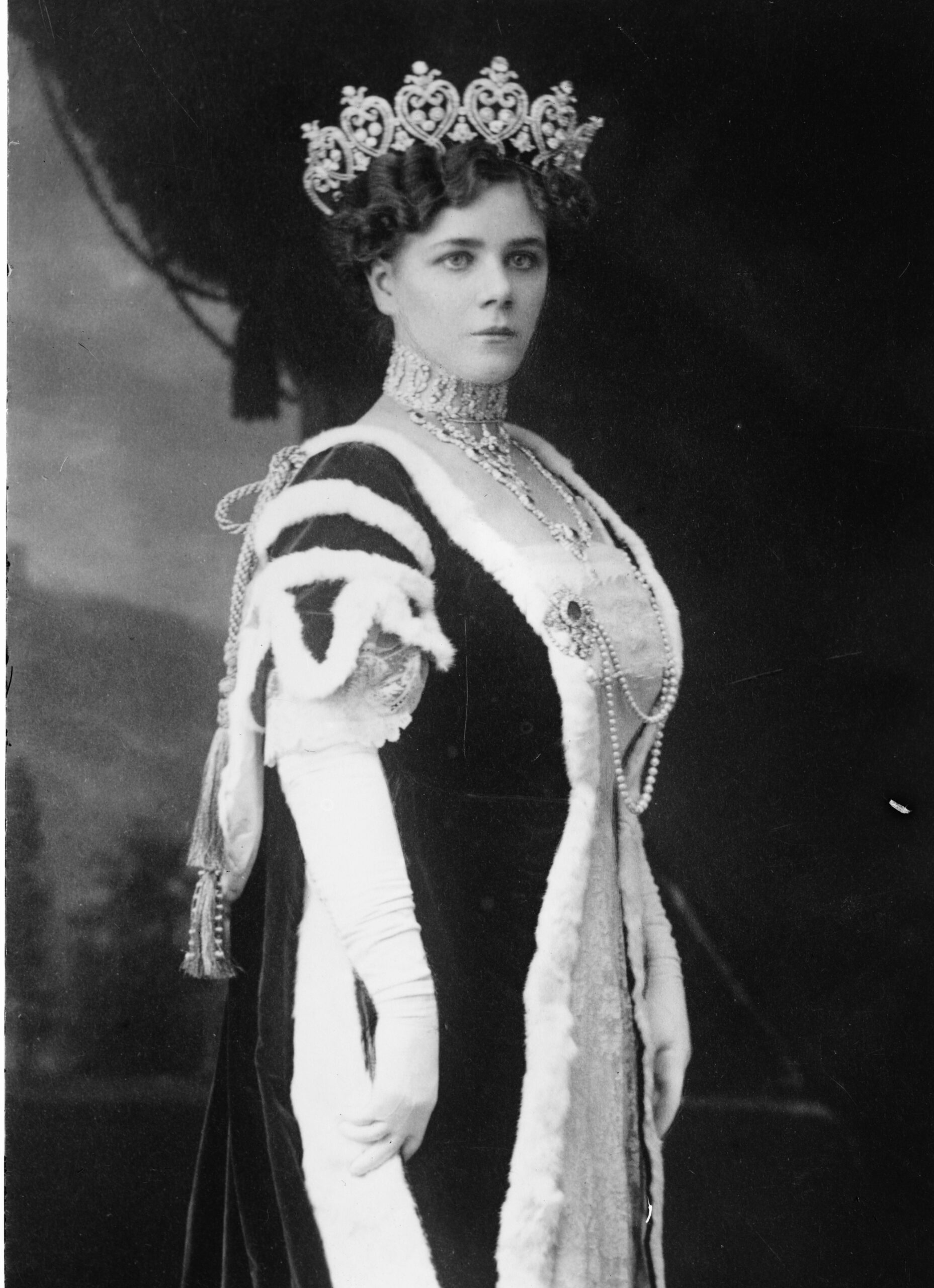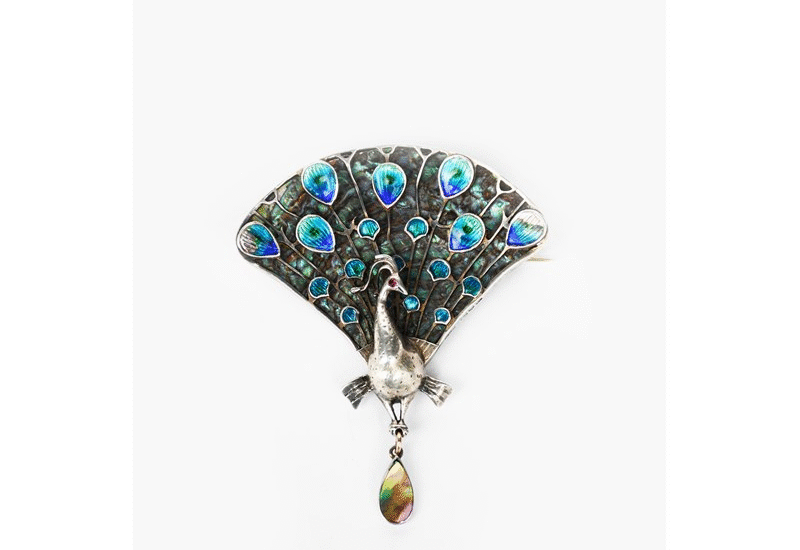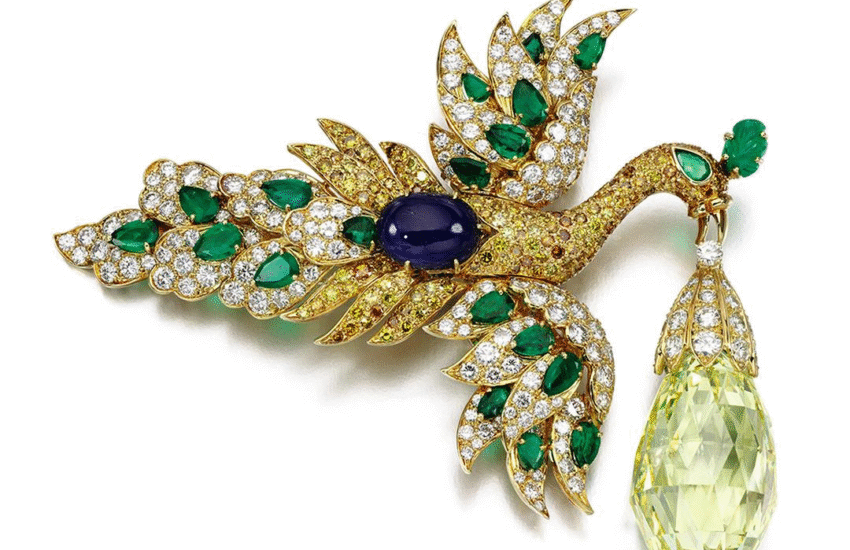A story of dukes, debts and pearl necklaces
One of the most fun things about reading old newspapers is coming across little snippets of stories – crimes, failed marriages and so much more. The Evening Express on the 15th of October 1901 has a real treasure. Tucked away between the wedding announcement of the Archduchess Elisabeth Marie and the death of a man on a railway line, is an intriguing paragraph titled ‘Imitation Jewellery: the Duke of Manchester sued’. It’s the revealing story of the 9th Duke of Manchester, his debts and three pearl necklaces.
The secret wedding of the Duke and the heiress
The court case brought by Frederick and Co. followed the wedding of a British aristocrat to an American dollar princess.
William Montagu, the 9th Duke of Manchester, had been energetically pursuing a rich bride for some time. In 1897, in an attempt to fox his creditors, he unilaterally announced his engagement to the wealthy May Goelet – much to her surprise and dismay.
By 1901, he had succeeded in obtaining a suitably wealthy wife. To celebrate, he spent the moderately impressive sum of 695 dollars on three imitation pearl necklaces for his new bride. Rather less romantically, he failed to pay for them.
The lovely bride, who received these expensive (if ersatz and unpaid for) pearls was Helena Zimmerman, the 21 year old daughter of the American railroad magnate Eugene Zimmerman and his wife Marietta Evans. Helena was one of the great heiresses of the American Gilded Age and according to the Cincinnati Enquirer (23 July, 1900) :
She is a handsome blonde and a belle at the Matthewson (Hotel), where she has been staying since July 4. She is an expert swimmer and is seen on the beach daily.
She was also an easy target for the 23 year old William ‘Kim’ Montagu, a notorious womaniser and spendthrift. William’s father, the 8th Duke was an equally poor money manager, despite marrying Consuelo Yznaga, his own American heiress. By the time of Kim’s wedding, he was effectively bankrupt.
Helena met the Duke at a costume ball in Dinard (not the first time that things would not be as they appeared) and the couple fell for each other. Or at least, Helena did.
Relatives not notified
The young couple, perhaps doubtful of obtaining the agreement of their families, decided to marry fast and without guests. According to the New York Times, the couple wed in Marylebone Church, London and then made a strategic exit to Ireland for a honeymoon. The paper headline reads:
RELATIVES NOT NOTIFIED
Dowager Duchess did not credit report until examination of register of London church convinced her it was true.’
New York Times, 20 November 1900
The speed and discretion of the wedding, meant that the respective parents found out in the most public way. Consuelo, the groom’s mother, didn’t believe the reports until confirmed by the church’s marriage register. Meanwhile the bride’s father, Eugene Zimmerman, still in America, was notified via the newspapers and a cablegram from his daughter.
According to the Los Angeles Herald neither family was thrilled, though I would say that Helena’s had the greater reason for worry. Marrying a young woman with 10000 dollars a year to a young, almost bankrupt British aristocrat was probably not what Helena’s father Eugene had hoped for.
MANCHESTER IS MARRIED Wedded to Helen Zimmerman of Cincinnati
HER PAPA HAS MONEY. He Was Bitterly Opposed to the Match.
Neither of the Principals Obtained the Consent of Their Parents, and the Dowager Duchess is unreconciled.
Los Angeles Herald, Volume XXVIII, Number 50, 20 November 1900
According to the newspaper, Eugene ‘insisted, however, that there had been false reports about the Duke of Manchester; that the duke had never been engaged to any actresses; that he is not a spendthrift and has not been as notorious as reports would make him.’ Not a glowing endorsement for a new son in law.
And, probably not a very accurate one. Less than a year after the marriage, and despite the money which Helena brought to it, the Duke could neither afford natural pearls, nor it would seem, pay for the false ones. Not only this, but he was being sued for failing to pay his jeweller’s bill, as reported in the press. The Manchester family must have dreaded reading the newspapers.
Three pearl necklaces for a wedding present
Large, matched natural pearls are extraordinarily rare. Historically, they were amongst the most expensive and highly valued jewels, worn in great ropes by queens and empresses. However, by 1901, when the Duke made his purchase from Frederick and Co, Broadway, New York, they were on borrowed time. In 1893, the Japanese entrepreneur Kokichi Mikamoto had found the secret to culturing pearls. Wearing impressive pearls no longer depended solely on the bounty of the sea and the skill of pearl divers. By the 1920s, the price of pearls had plummeted and anyone could have a convincing pearl necklace.
I’m not sure what other gifts William gave to Helena to celebrate their wedding. And, hopefully, some of them were paid for up front. The three imitation pearl necklaces were bought in December 1900, soon after their marriage took place. They were probably easier to wear and more accessible than the Manchester family jewels.
And, perhaps in 1901, a good imitation pearl necklace was still a rarity? According to the newspapers, Helena’s pearls were worn and admired in London. Some of the surviving photographs of Helena show her wearing pearls, most noticeably in a picture from 1912.

Helena was photographed in court dress in 1912 wearing the famous Manchester Tiara (now in the V&A) and with two strands of pearls pinned to a large brooch on her bodice. Real pearls or the famous Frederick ones? Or was she more likely to have worn her false pearls as part of her Tudor dress in a photograph of the National Theatre Shakespeare Memorial Ball?
The story of the Duke of Manchester, his marriage and the debts over Helena’s three imitation pearl necklaces is still unfinished.
Did Frederick and Co ever get paid for their three magnificent pearl necklaces? Helena persevered with her marriage until 1931 when her husband’s serial infidelity and reckless spending drove her to divorce. Like the the necklaces which she received as a young bride, her husband was perhaps not worth as much as he appeared to be and he was never fully paid for.
Further reading
To read more about the marriages of American heiresses into British aristocratic families (the real stories behind Downton Abbey), I recommend Gail MacColl and Carol McD. Wallace’s entertaining book ‘To Marry an English Lord: tales of wealth and marriage, sex and snobbery’ (New York, 1989).
And for another story of marriage, conniving and false advertising, why not try the story of the advertising widow and the canny Scot. Or
Love and divorce: betrayed by a locket
‘A fine fellow full of pluck’ – the sad end of the Prince Imperial and his unlucky locket


